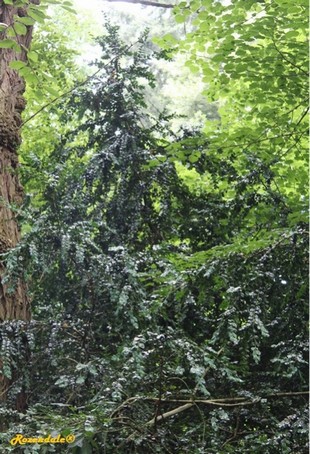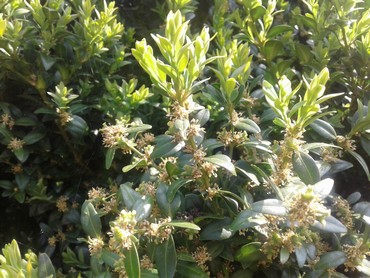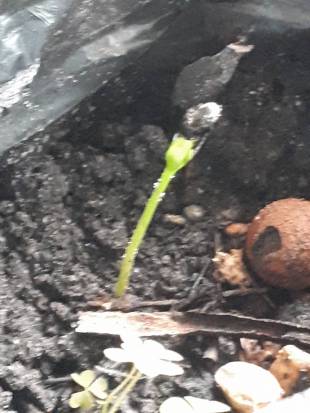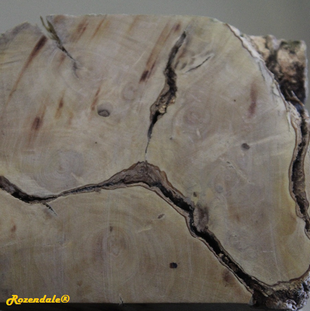Description and Uses
Buxus sempervirens (European box) is a
temperate
shrub from
South West Europe . It is mainly grown for its
ornamental crops
, which have a
medium shelf life. The crop is harvested by
total removing. It starts flowering after
9 -
15 years. The yield will be
50 fruits/shurb/year, but in its top season there will be a yield of
7m trunk. Other crop types include;
medicinal, ornamental, timber, . The
shoot is used as
inedible . The
root is used as "
anti-depressant, " with
Diacetylbuxadin (? -
?) as its significant
phytochemical. There is
Buxus leaf oil extracted by
steam distillation from the
shrub's
powdered leaf yielding
0.10% -
1.00% oil. The
shrub's wood is called
boxwood and has a density of
950 -
1,000 kg/m³. Regarding firewood production the
shrub's growing speed is
slow, it's energetic value is
4400 ckal/kg and the wood's drying speed is
fast. After
80 years the
shrub can be totally removed as it reached its commercial and ecological goal.
Buxus sempervirens has a lifespan of
1,000 years.
Environmental limitations
The shrub is
8 meters tall with a crown of
5 meters wide. The
shrub prefers a planting distance of
25 cm and a row distance of
300 cm. It is
slow growing and
shade tolerant.
Buxus sempervirens has a
shallow root-system and it has symbiotic associations with the
Glomus intraradices fungi
(endo-mycorrhiza). It is
not able to fix nitrogen with
"any bacteria. The name(s) or string of bacteria include(s)
"not applicable ". The
shrub's flower-morphology is
hermaphroditic and is pollinated by
insects.
Buxus sempervirens is
evergreen and
not allelopathic and has
no thorns.
Buxus sempervirens thrives in an altitude of
2 to
1500 meters above sea-level
(temperate). The minimum temperature is
-15°C; optimally between
10 -
23°C. The optimal rainfall is
900
mm/year. Without irrigation the annual rainfall should be between
500 -
800mm (L/m²). The optimal soil-pH is between
6.0 -
9.0 in a soil texture of
sand. To salt it is
a bit tolerant to wind
a bit tolerant and to fire
intolerant.
Pests and Diseases
Buxus sempervirens is susceptible to the following pests:
Lepidosaphes ulmi
, Cydalima perspectalis
, Eurytetranychus buxi
. And it's susceptible to the following diseases:
Boxwood blight ,
,
.
Seed Propagation
Seeds are
stratificant and can be stored for
9 months. There are approximative
75000
seeds/kg. The seeds can be propagated as followed:
- (3) Remove the seeds from cold to a permanent warm temperature.
- (1) Store harvested seeds dry at room temperature before chilling period.
- (1) Store harvested seeds moisty at a chilling temperature of 3-7 degrees C for 1-2 months
- (2) Soak the seeds overnight in warm water before sowing.






